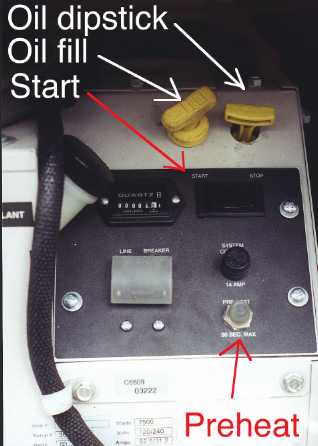Generator Oil
The oil for the generator should be checked
regularly, including during long-term operations. Open the generator
compartment and use the dipstick.
The generator oil should be changed every 250
hours or
every 6 months, whichever comes first.
Starting the generator
If the generator is cold, you will need to
preheat the glow
plugs in the engine before the generator will start. In order to
do this, open the generator compartment on the left side of the truck
behind
the front wheel, depress the glow plug button for 30 seconds, and then
push the start button on the same control panel that has the glow plug
button.
If the generator is warm, you will not need to
preheat
the glow plugs, and you can push the start button on the dash or the
start
button on the generator itself.
The transfer switch will gradually turn on the
AC power
to the unit, to prevent electrical surges, over the first two minutes
of
operation.
Note the generator 110VAC circuit breaker next
to the preheat button. If it is tripped the generator will run,
but no 110VAC will be provided.
|
 |




